August 1, 2023: Rattle Battle 2
The tools, tactics, and procedures in the war for sonic sanity.

In last week's episode I gained a few small wins in the war against noise clutter. Once I got a small taste of victory, I couldn't stop. The fight must go on.
I spent an additional week on the hunt to restore the elusive silent Tesla, the ultimate driving machine. After 9 years it's time to reverse the aging effects of the rattlecan the car has become. As suspected this became a seemingly unending exercise in unpeeling the onion of the symphonic harmonics of numerous sources of unwanted noise from every angle. I'm battling against an orchestrated army along multiple fronts of different sonic characteristics, texture, and annoyingness. Solve one mystery, another reveals itself. Especially the higher-pitched rattles that make the car feel like a 1990 Hyundai.
YouTube helped me get an idea of the landscape I'd be tackling, although there aren't enough creators showing teardowns beyond door panels, the center console, and dash. Some reverse engineering was required to determine how the interior was put together from diagrams or pictures of pulled parts on eBay while at the same time not breaking anything.
As I ripped trim panels from the car I've learned how this older-gen Model S design allows so many creaks and rattles to develop. Although I suspect most cars these days are similar it's still disappointing how little effort is put into factoring in how harsh interior noise affects the long-term drive experience quality since there are so many hard surfaces that come into contact with each as they bend/warp under changing seasons, thus opening opportunities to vibrate against each other while over rough pavement, creating that nerve-wracking, teeth-clacking, insanity-inducing experience.
Snapping off many of these interior trim pieces made of cheap, hard plastic requires an uncomfortable level of force that feels bordering on breaking the part into two. Definitely not a premium feel to these pieces of injection molded plastic.
Protip: when test-pressing your hand against a surface to see if it makes noise, use a piece of the closed cell foam since it'll remove any rubbing sound created by your skin and the test surface.
Rear Hatch
I started with the smaller liftgate trim pieces on the upper section.
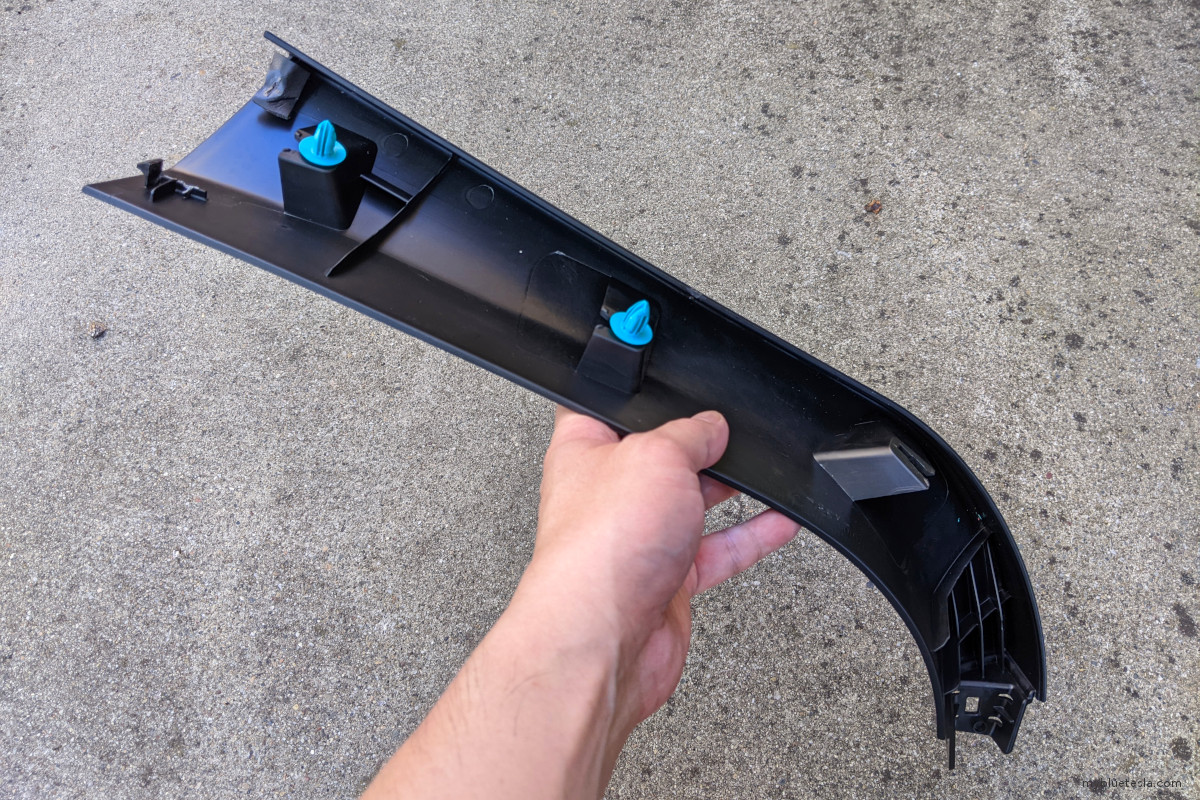
These are relatively easy to remove but at least one blue push pin for each of the side pieces broke off during removal. I added a thin layer of foam behind any area where a wire could jiggle against a metal or plastic surface. There was a loose yellow connector next to the radio antenna module (part 100480800D) which had nothing to connect to so I just wrapped it up in some foam. I'd assume this connector was meant for the Sirius XM option which I didn't order.
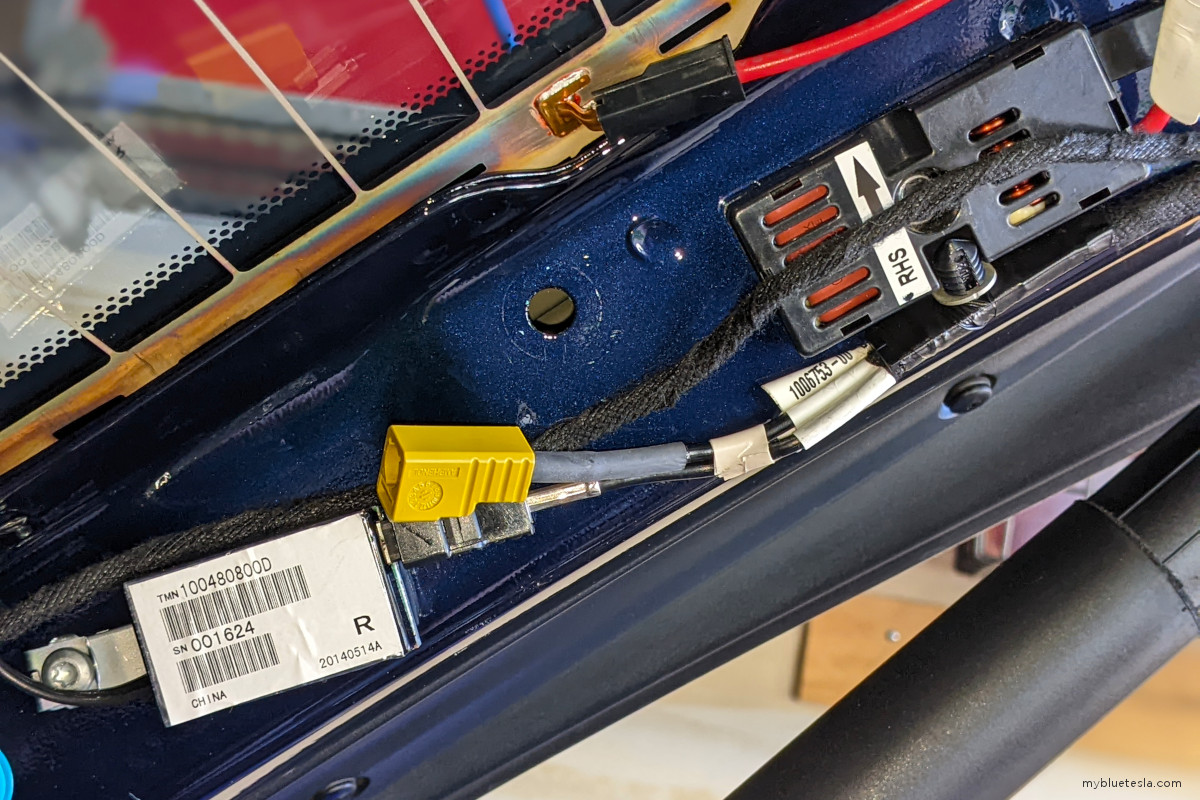
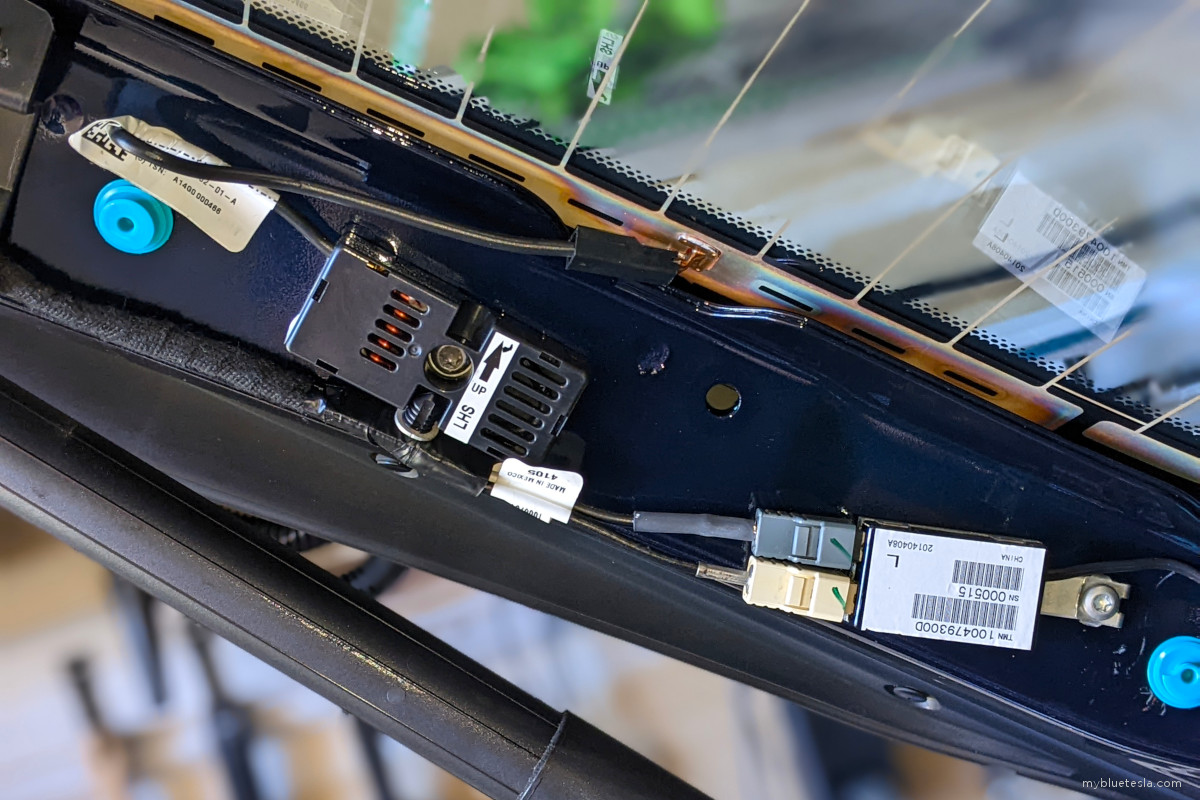
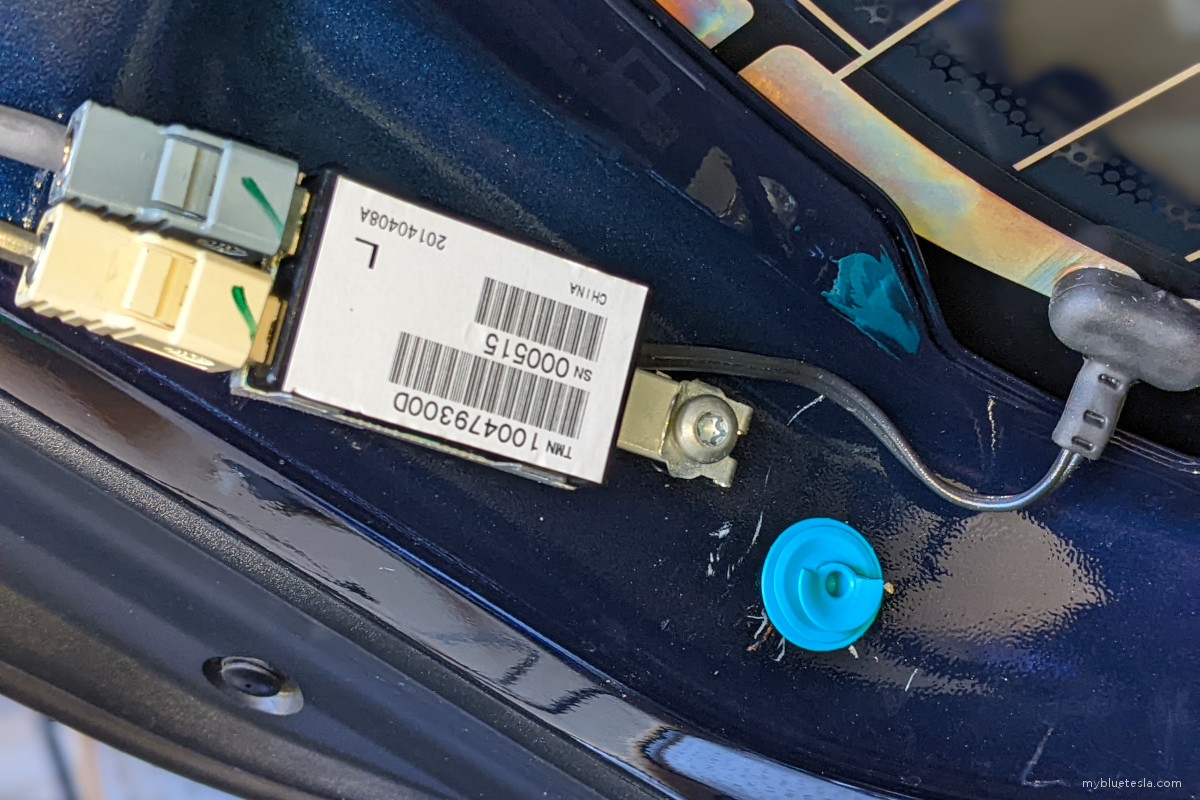
A surprise find was the pinch sensor trim (part 6007576-00) next to the liftgate struts. Quick presses along them showed a little bit of potential play where rattles could occur.
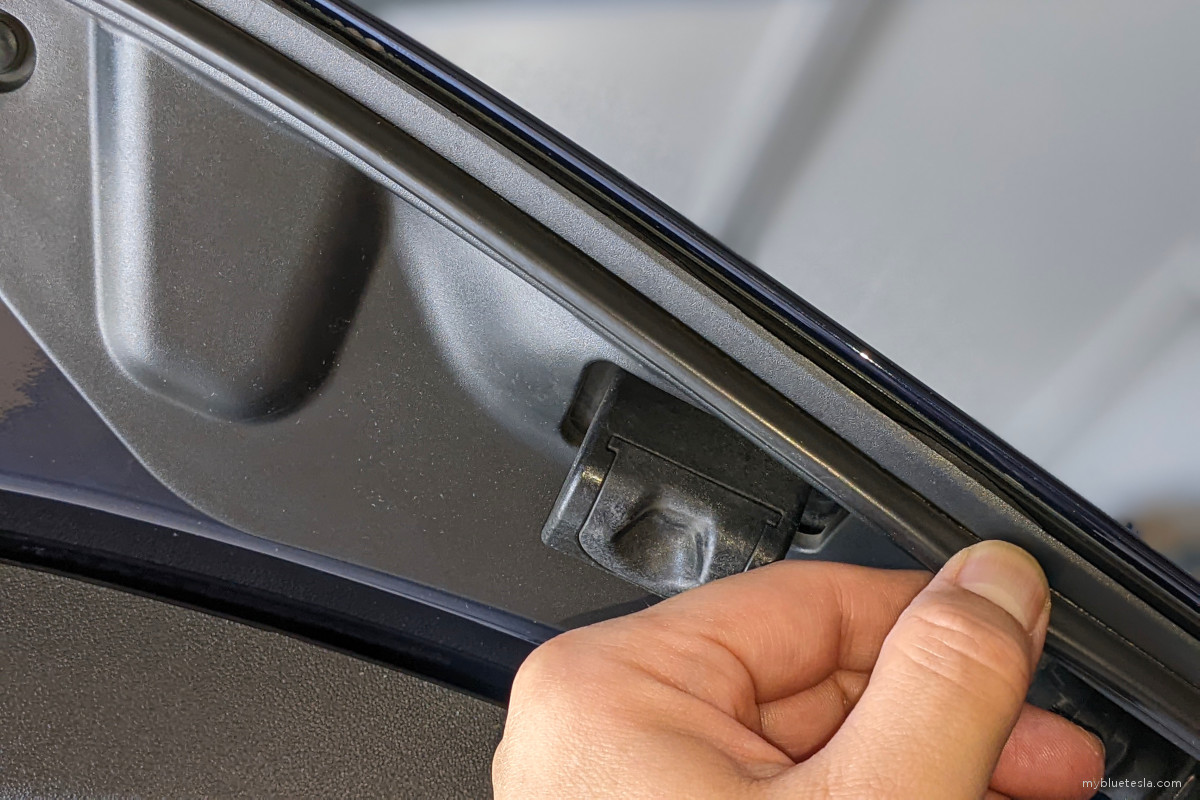
Next to the parcel shelf sits part number 1010338-00-D, the C-pillar trim that wreaks of cheap hard plastic once you tap on it. The stuff made of nightmares. Pull this out and look at the back and you'll quickly realize where foam should be applied as it interfaces adjacent parts.
Next to the tail lights are the plastic covers with the bumper stop for the hatch to close against. Either time warped these out of shape or Tesla's parts QA was lacking (guess which I'm betting on), these pieces are not quite tight-fitting and aligned as they should be. Some foam at the obvious contact points and done.
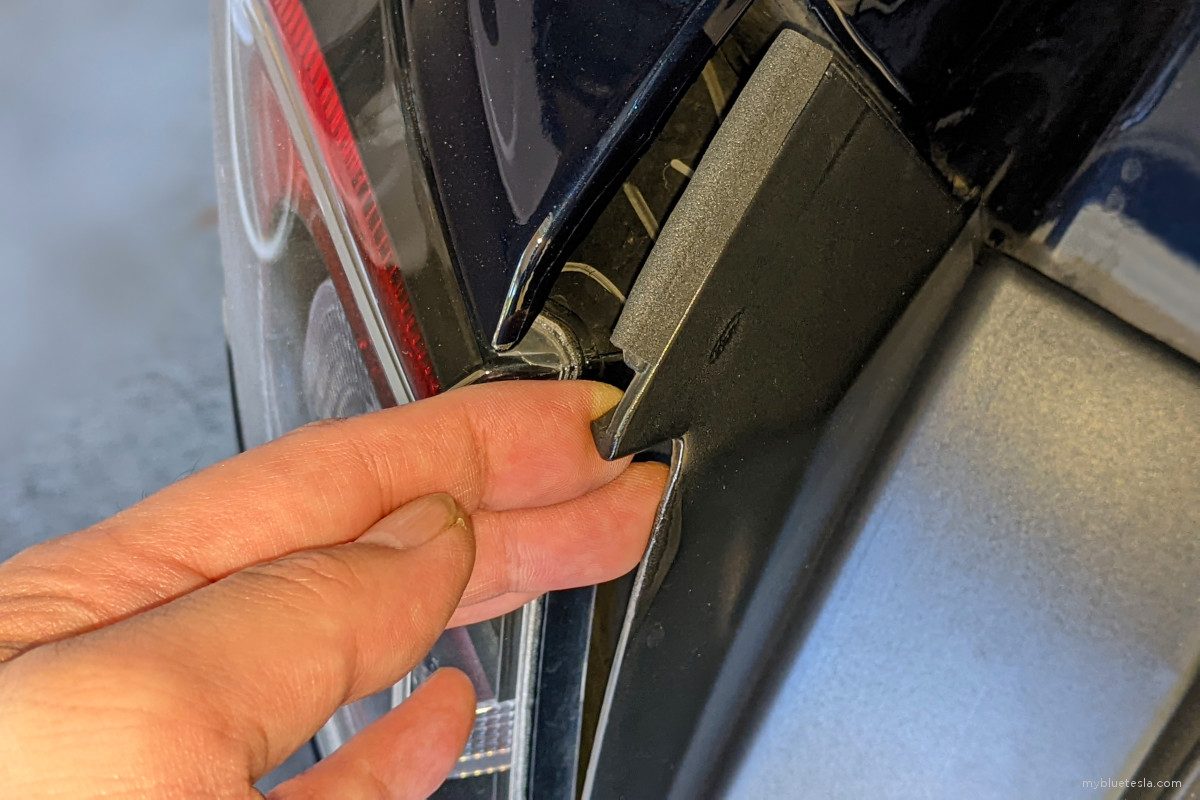
The final item in the hatch area was the trunk latch cover. If you're an old school Model S owner like me then the cover comes in two parts. Test wiggle it and you'll be blessed with that agonizing plastic-to-plastic rub. Prying open the end reveals where the two parts grind against each other.
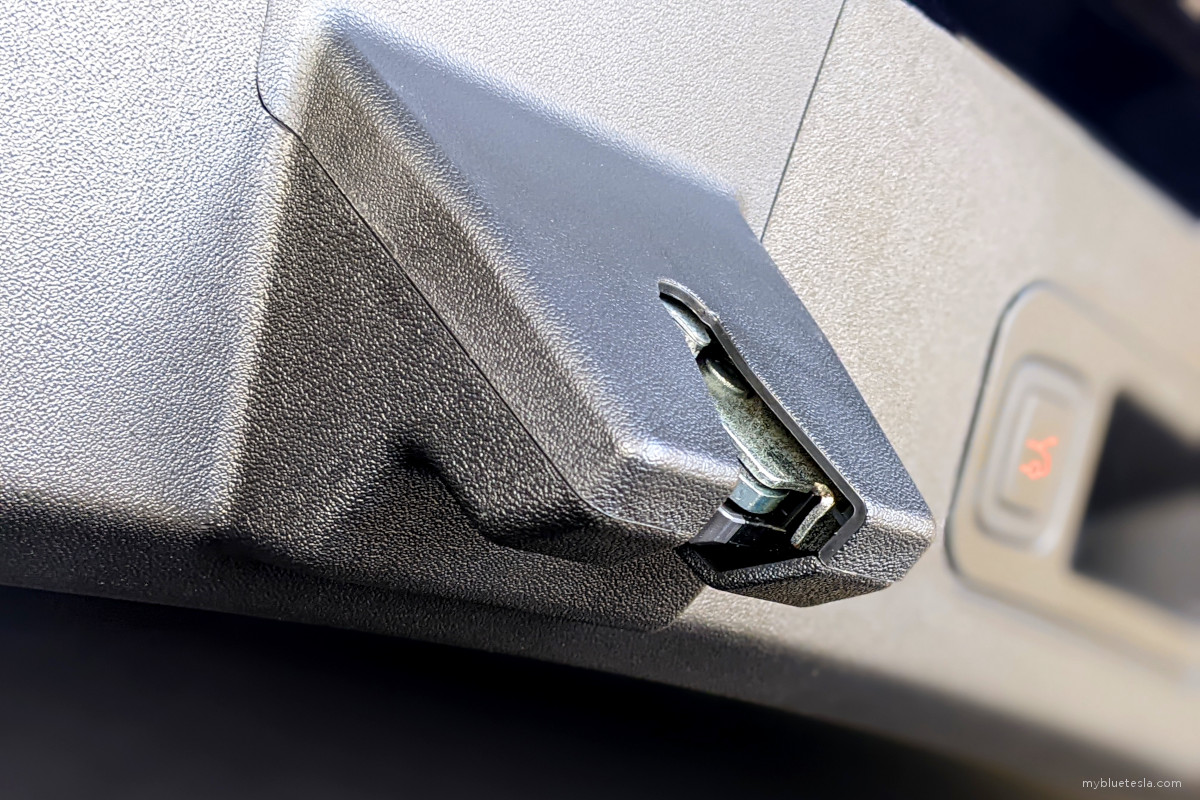
Down the Alley of the Yacht Floor
The center console area was always a creaky mess. Resting my arm or leaning any weight onto it would cause the fixture to reveal how much plastic-on-plastic rubbing was happening. The side panels (part 1005365-00-C) towards the front were removed, the entire length of the backside was foamed up, and then snapped back onto the base. Voila - fixed. The top trim piece where the armrests ride on was also given the same treatment and this had surprisingly good results. Resting my arm on there almost never causes any noise now and gives the impression that the console is a solid single piece. I didn't bother working on the console's side piece under the armrests (at least not yet).
When reinstalling one of the arm rests I sort of crushed the rails holding the ball bearings in place. The YouTube people who just slam on it when putting things back together make it look easy. In my case there was a bit of spot-repairing needed since I apparently am not capable of lining things up correctly. Something-something look before crossing the street.
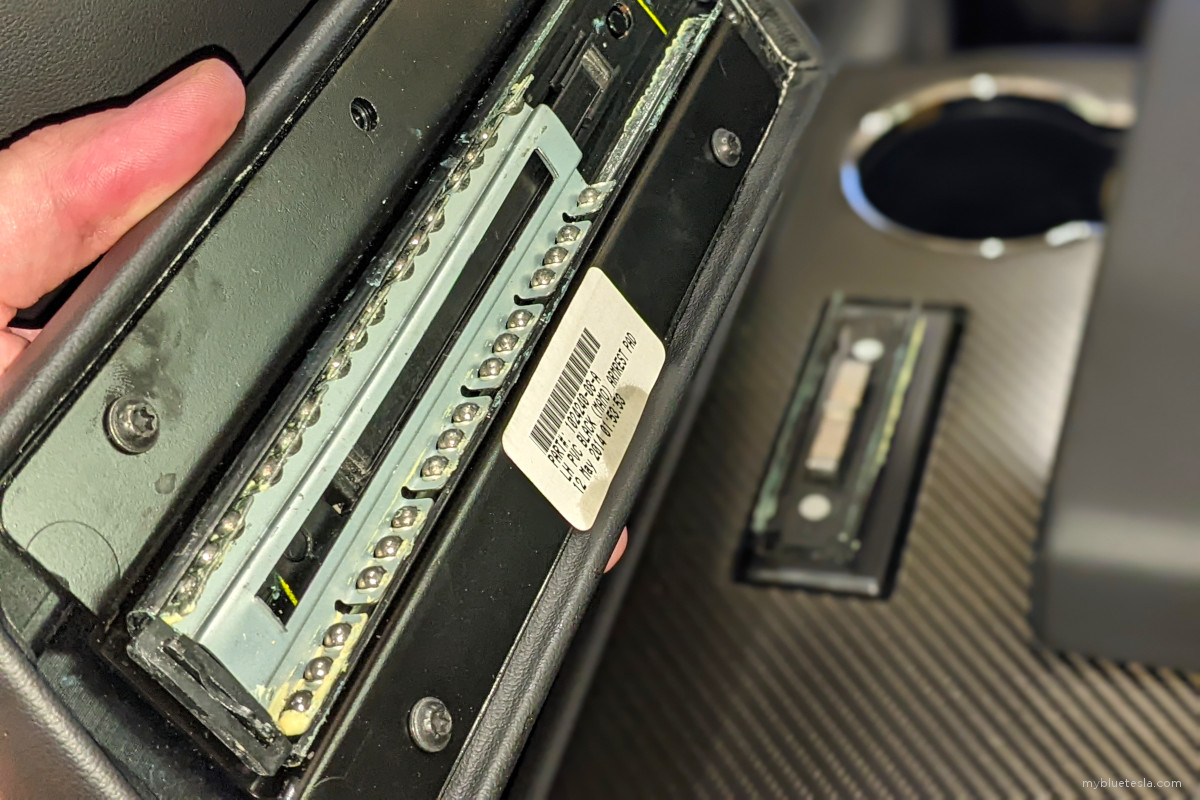
Beneath the MCU is the little cubby and I decided to give this a once over. It's really made up of two parts and flexing it a bit results in that unavoidable plastic rubbing groan. It's like fingernails on chalkboard to the senses. Once removed from the dash I applied foam pieces at the contact points where it screws together and also the backside facing the dash internals. There was a loose wiring harness that sat right behind the cubby bin wall that I also wrapped in foam. I assume the harness is meant for the premium audio option which I didn't order. Once the cubby was reinstalled I test-pressed on it and wow what a world of difference. Instant win.
The Things with the Unnecessarily-Complicated Handles
If you want to talk about the main archrival architect of driving annoyance it's the design of the door card internals. There are massive opportunities for various parts to make contact with each other, either loose wiring harness ends (such as those for interior LED lighting for which I didn't order) to bang against the metal door, wires crossing wires, the aluminum door pull trim rubbing against an adjacent part, etc. I ended up applying so much foam against different surfaces that I figured maybe I should be installing Dynamat while I'm at it to go the extra mile.
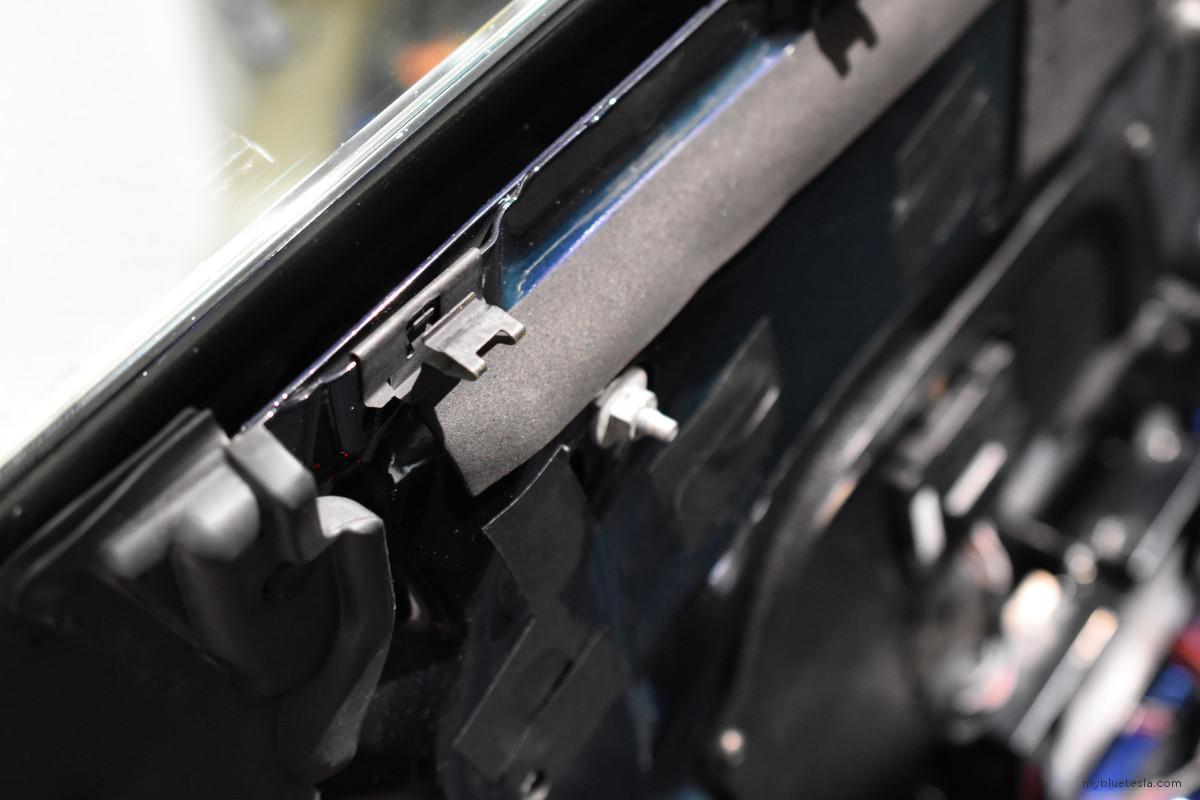
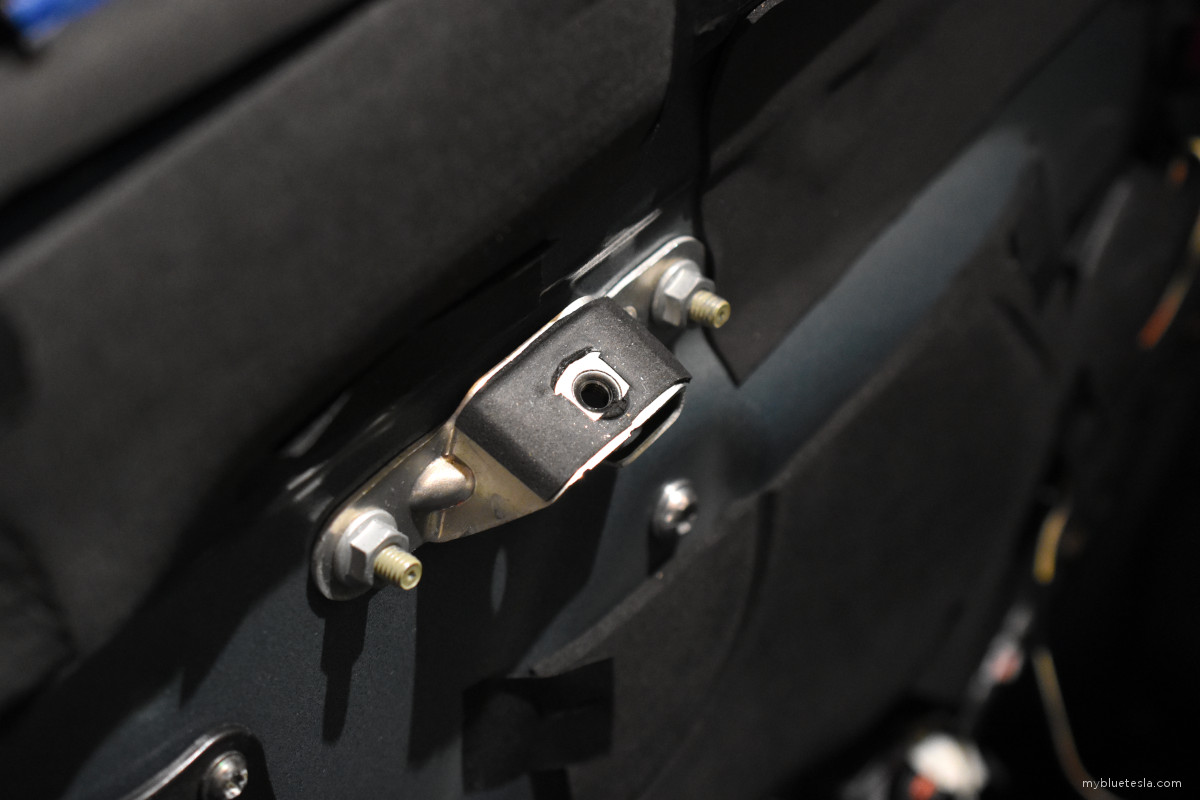
In addition the white push pins are notable rattle points. Some of these can be loose in their pockets so wedging a small bit of foam right where they sit made an instant difference during test drives. If you want to de-rattle your car, I suggest jiggling every single one of these and wedge in the loose ones. It's an easy win - a one-shot, one-kill by a heat-seeking bullet that you must leverage to advance to the next level.
The door armrest pads also needed some thin strips of foam wedged in where it lines up against the door molding. Otherwise occasional squeaking can happen, at least with my car since I ordered the "partial leather" option which meant only the seats are leather in my car. That's what I get for being cheap.
Also wedge in a bit of foam here:
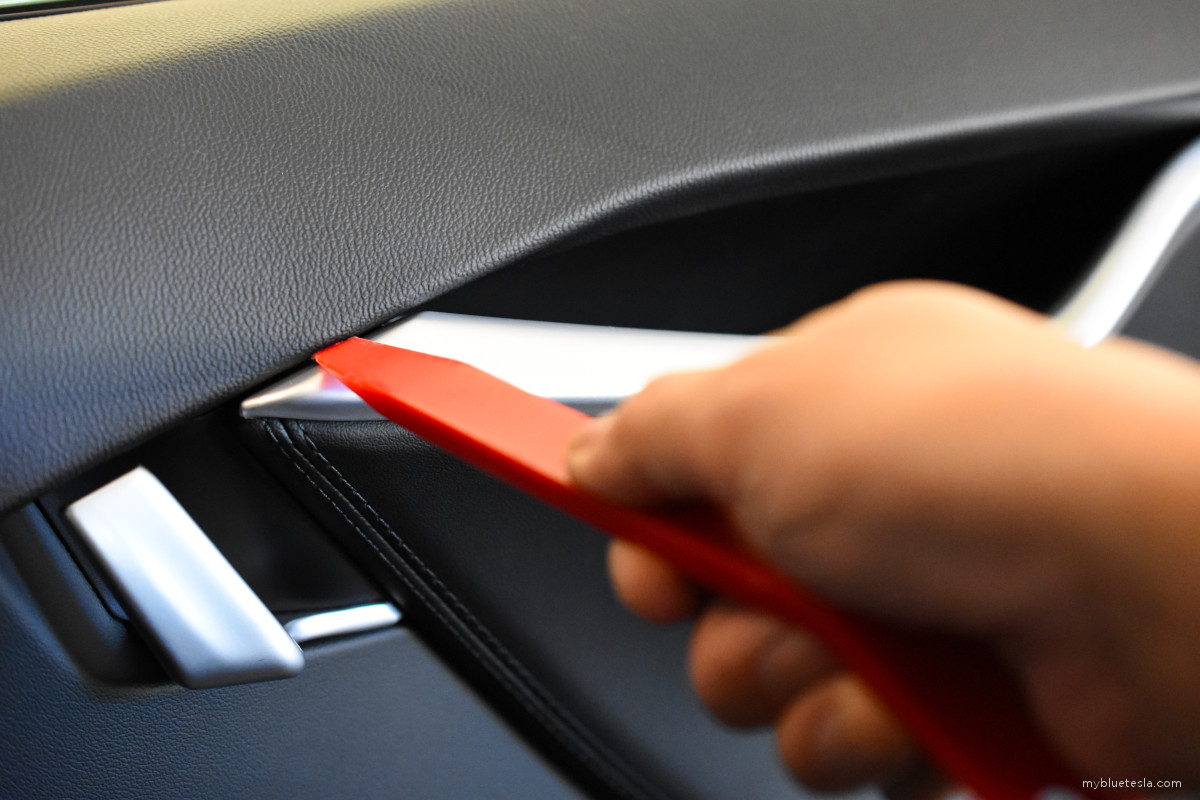
I went through so many iterations on isolating door rattle sources that after a while I didn't bother reinstalling the rubber/plastic inserts covering the 10mm bolt and T30 screws that hold the door card to the door frame. There was considerable time and repeated frustration over many test drives invested in just the doors for this project, but man was it worth it. And necessary if we are to maintain that whole "electric vehicles are quiet" thing.
Front of House
While I did some work on the front dash a few years ago, I revisited for some additional coverage. Like many injection molded plastic parts the backsides have those criss-cross ribs which can rub against the surfaces they're braced against. The foam helps a lot here as a quiet mediator. The rule is to apply it everywhere if you have enough material on-hand. The lower front pads on both the driver's and passenger side had to be generously lined with it.
Even after all that work there was still something rattling in the corner and eventually I figured out that the air vents installed on the carbon fiber trim can be a noise generator when pressed against it. I went the extra mile and pulled out the trim pieces and individually removed/foamed the vents at the contact points. The dash was starting to look like a demolition at this point, but boy did I learn a lot about how to disassemble the human-facing part of the dash. Maybe I should apply for a job at a Tesla Service Center.
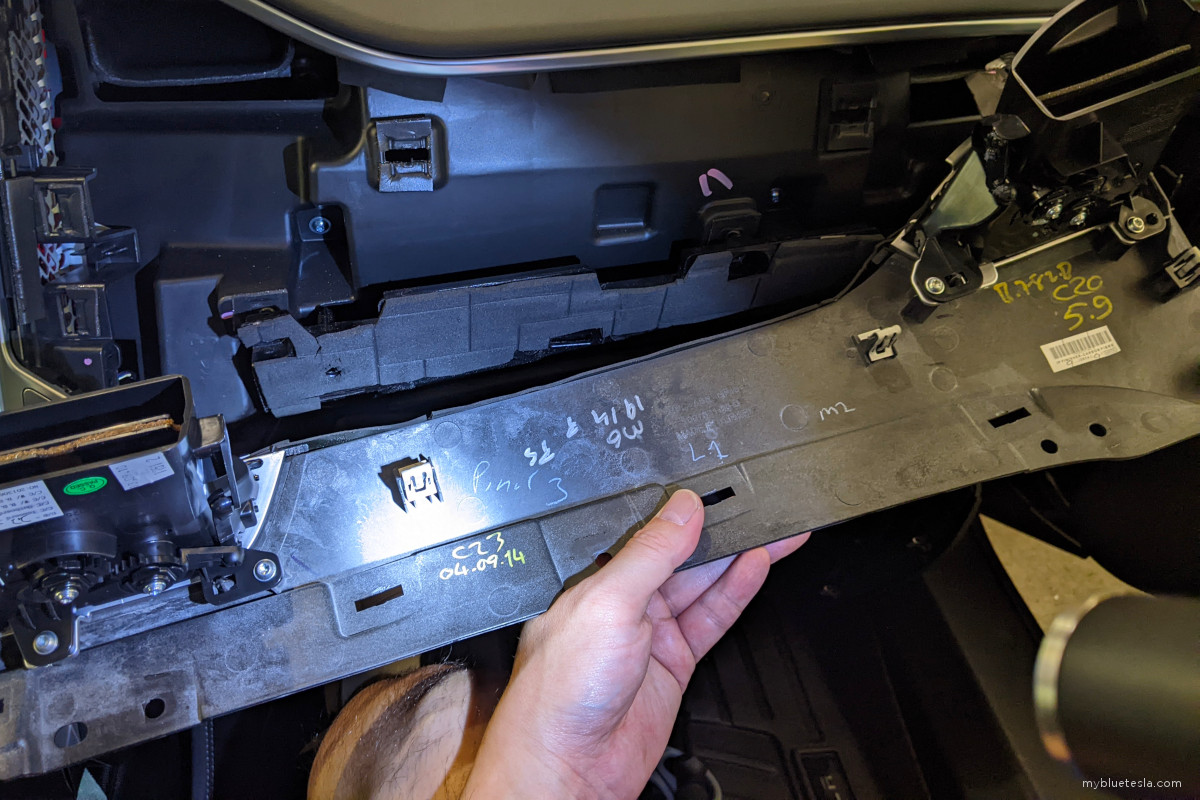
The little side pieces on the dash where the key fob antenna module is located also needed to be lined up with the foam, and the loose wiring harness also needed the same attention.
On top of the dash is the big cover pad which needs to be pried up somewhat during the work mentioned above. Shining a flashlight underneath will reveal that there are places to shove some foam into. I never completely removed the pad but I got just enough in there in the right places to suppress just about all the usual harsh noise that occurs.
With the dash being almost completely made quiet by this point, something was still amiss. It turns out that the glove box door had a bit of looseness. While there are tiny bumper stops that press against the top of the door, there was still enough play that it might jiggle slightly while riding over bumpy roads. Solved that with a stacked set of foam pieces. Although a bit unsightly, at least it's somewhat visibly out of the way.
One minor part on the dash area that I finally noticed - the vent adjustment lever. This piece is separate from the fin (so it can slide horizontally) and comes in two halves, and between each halve and the fin itself there's a slight gap which when jiggled causes a rattle. I got a roll of thin velvet ribbon strips at a crafts supply store to wedge small bits in these gaps. The gap is so thin that even a 1/16" strip of foam would be tough to push in.
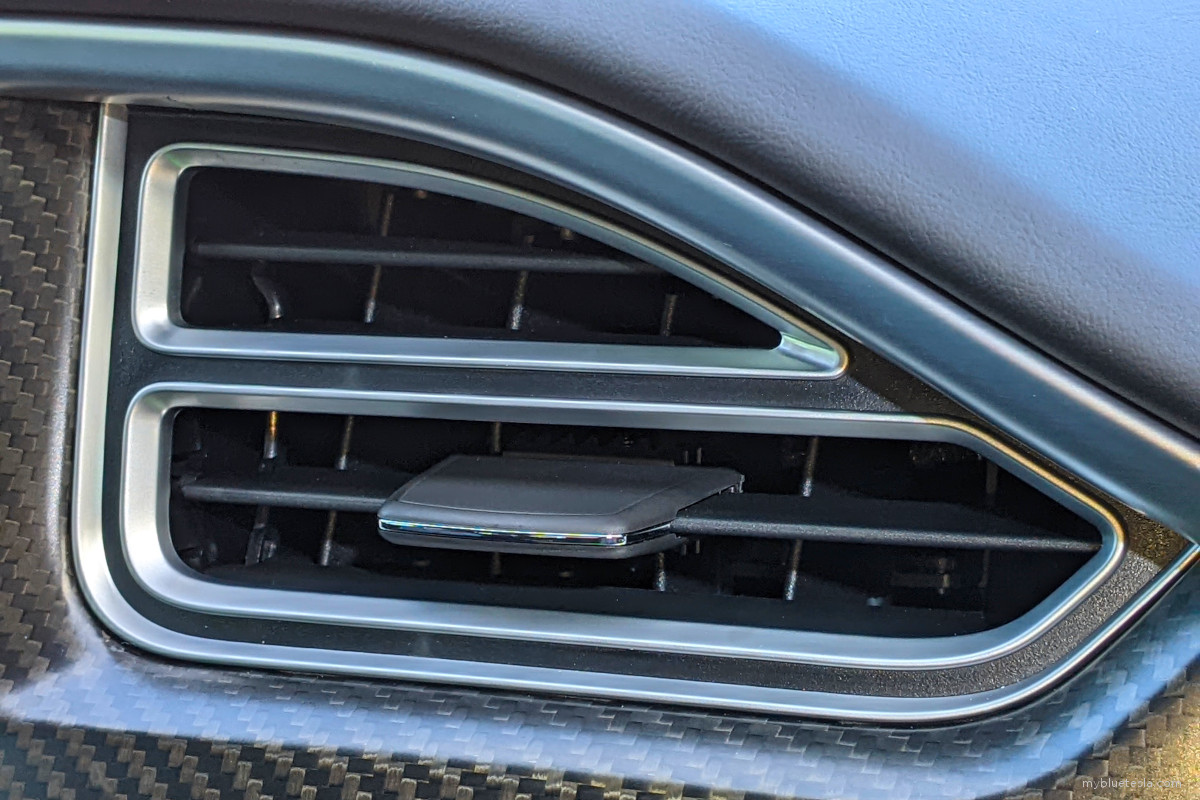
However the vent mechanisms involve other plastic parts that help guide the fins horizontally and vertically. Not sure if there's anything I can practically do to dampen the noise potential there.
Back Seats
Onto the rear seats, and while there wasn't much going on here I could still hear that odd groaning sound of leather rubbing against plastic somewhere. It turns out that in one corner the seat bottom had enough friction against the plastic trim underneath to cause a contribution to the noise orchestra. I shoved a thin cutout of foam and that was that.
C-Pillar
The little hard-plastic trim piece next to the small rear window where the seatbelts pass through needed some finessing of foam pieces into different area. I know where the clips are that hold these in place with the larger trim behind it, but I found it difficult to properly remove so I just opted to cram foam strips in various corners to mitigate noise sources.
Rearview Mirror/Forward Camera Housing
During one of my final test drives I swore there was just one more odd sound coming from the dash pad or from somewhere in the dash vent. However I finally figured out that it was the plastic housing for the forward Autopilot camera and base for the rearview mirror. In my car this is two pieces and just wiggling it instantly triggers more sonic nightmare fuel.
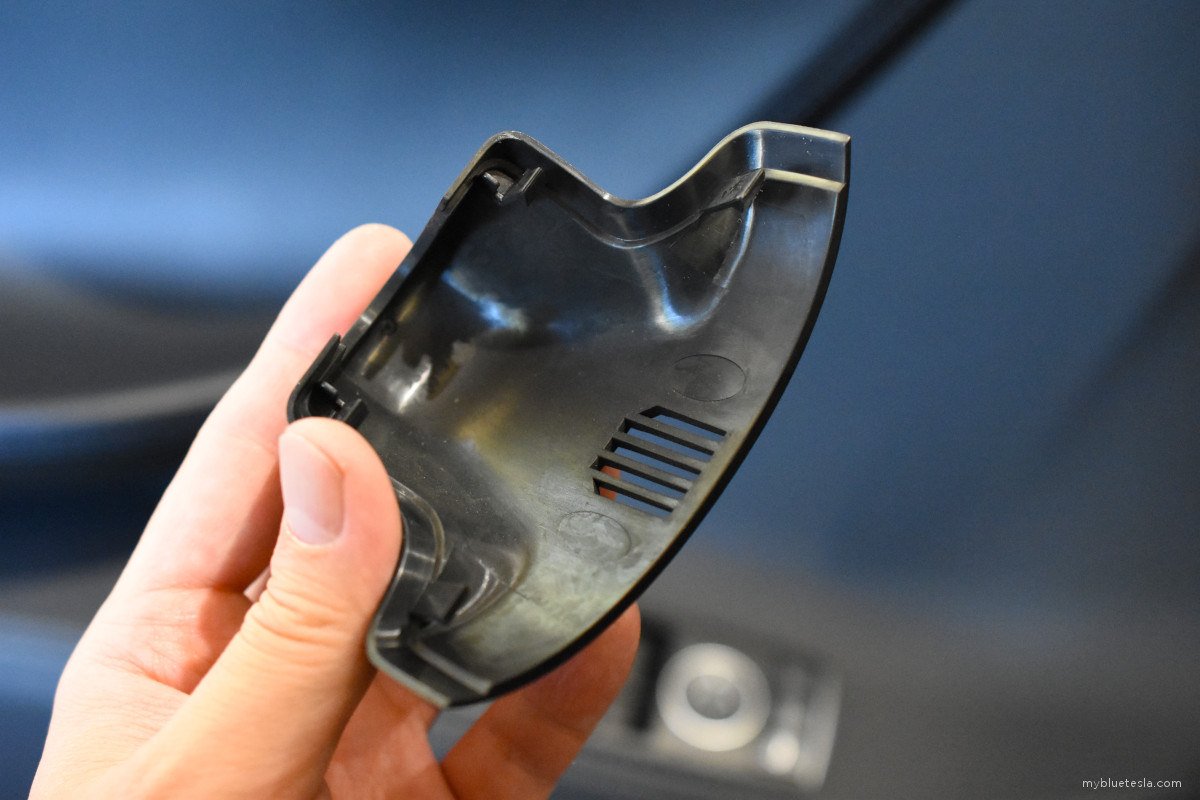
Removing these pieces is relatively easy and requires prying the front piece (the one closest to the window) out directly downwards, then disconnecting the harness and removing the mirror (just twist the base counterclockwise and it'll loosen out), and prying the sides of the main housing cover.
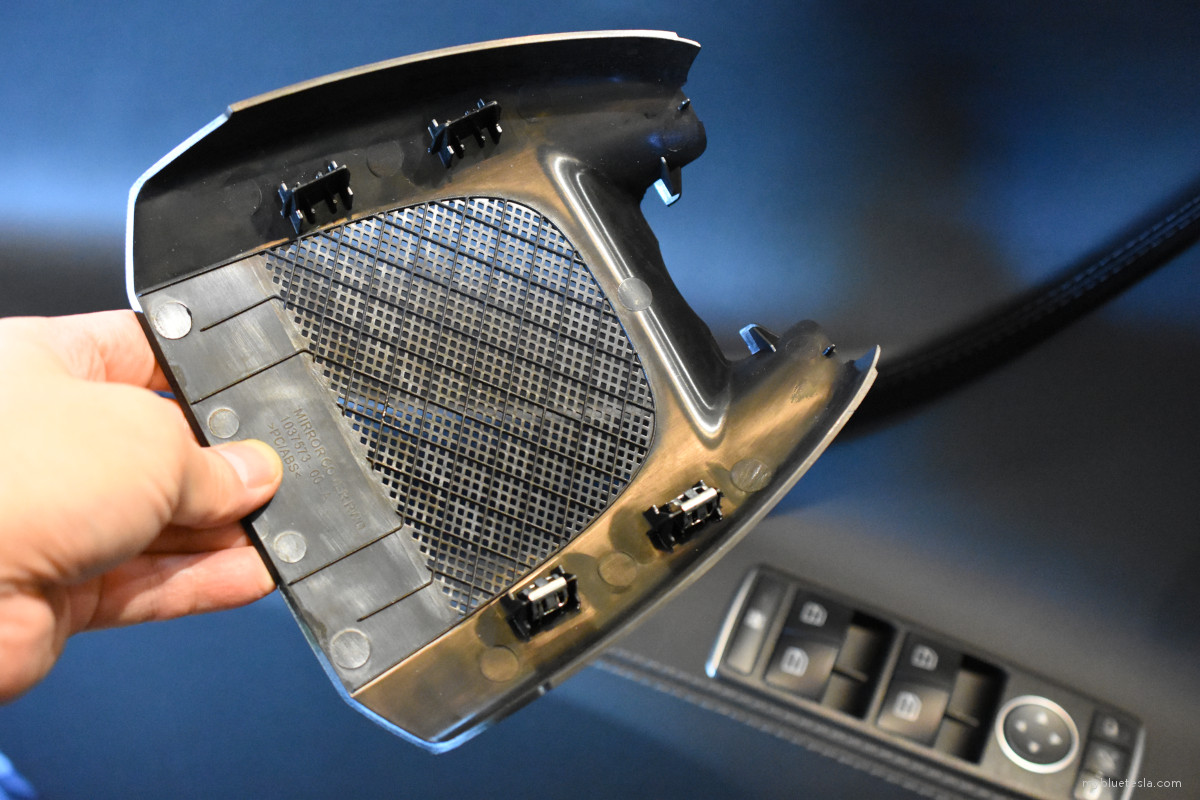
I had to line just about all exposed areas with a thin layer of foam. especially where the two plastic parts mate. Intricate scissor work required to cut some small pieces out for this.
Behold - AP1 hardware, a long-forgotten relic. I suspect no Tesla software engineer knows what this is these days.
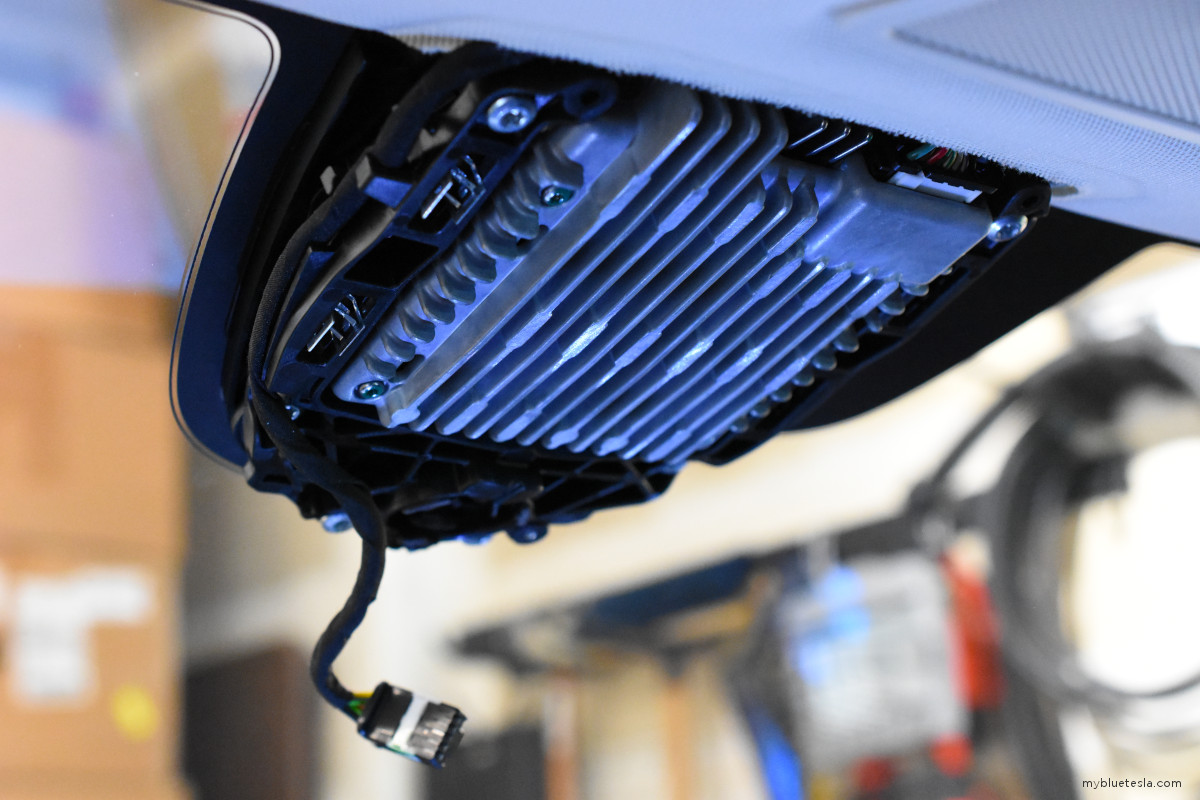
...Almost There
So after all this what remains is the driver's seat (there's some rubbing/squeaking as well as noticeable difference in feel between the front driver and passenger seats after 9 years) and the lower liftgate trim cover. That liftgate piece is a real pain to put back by myself (it's really a two-person job) and I might just live with the inevitable minor resonance that I can somewhat hear when grinding over rough pavement. It's just far back enough that it's not as agitating, but just there enough to still annoy me.
Or I might buy a few extra push pins of the blue and white variety (since I'm sure at least one of those pins in the hatch has been crushed from my previous work on it) and tackle this another time. Now that I've sort of isolated that remaining rear rattle to likely that hatch piece, a part of me doesn't want to rest until justice is served. I've become obsessed, the slayer of noise pollution, all in the name of peace and a better world. And Freedom. Made in America, baby.
The Sound of the Future
But in the end I've finally gotten to the point where my test drives are eerily quiet compared to a week ago and much less jarring of an experience, even on rough roads. It's certainly not perfect, but if I had to put a number then maybe a 95% reduction overall in rattle-y harshness. Those rattles have mostly been replaced by dull thuds. Even the wind noise is more prominent now. I'd say that's a pretty big win for me.
Overall the vehicle feels a lot more solid now and inspires much more confidence since it doesn't feel like the Millennium Falcon about to fly apart when the next TIE Fighter blast hits. And ultimately it makes the car exciting to drive again even though it's almost a decade old. Even the doors seem to shut with a sense of authoritative thud that didn't seem to exist previously.
Bringing the premium feel back on a car bought at premium, early-adopter prices. It's almost as if it's 2014 and my dream machine is back. I remind you this is what Elon was saying back in 2011:
I wouldn't say everything in the car has been extremely quiet, Elon. Not by a long shot.